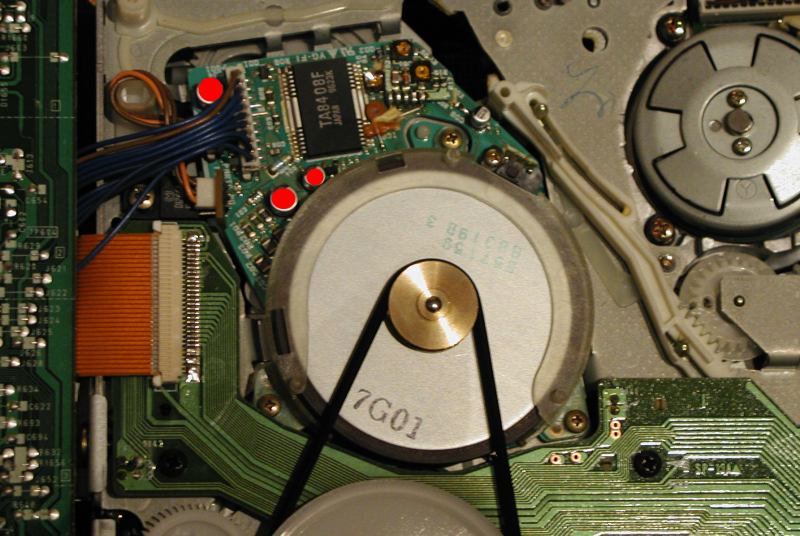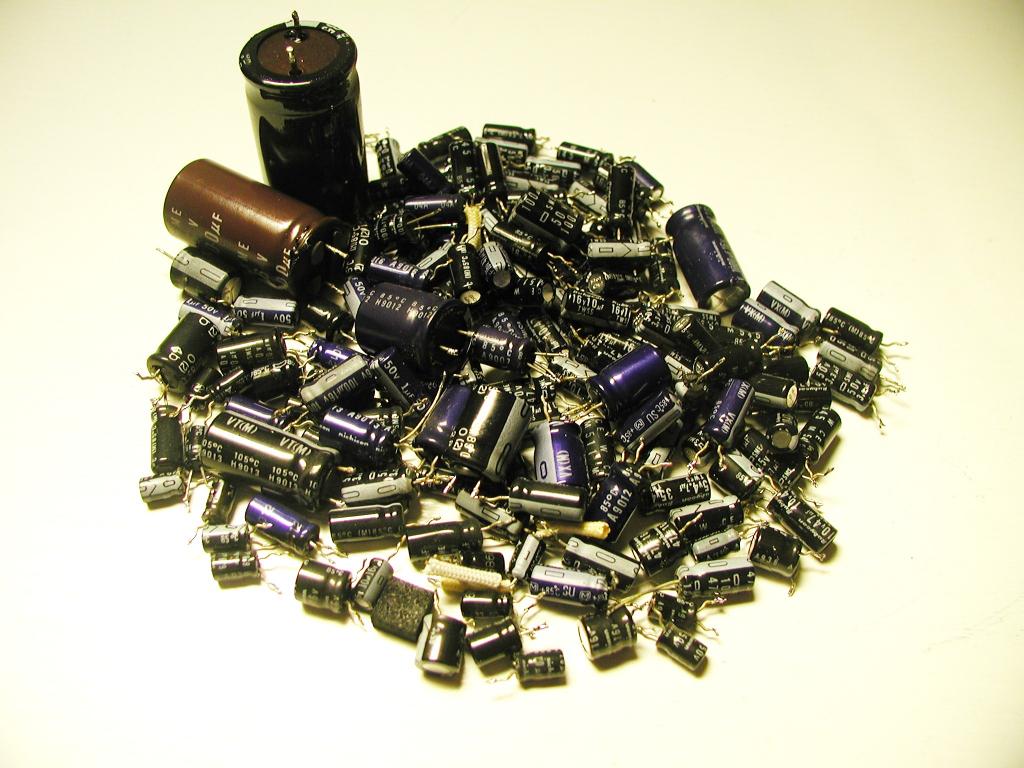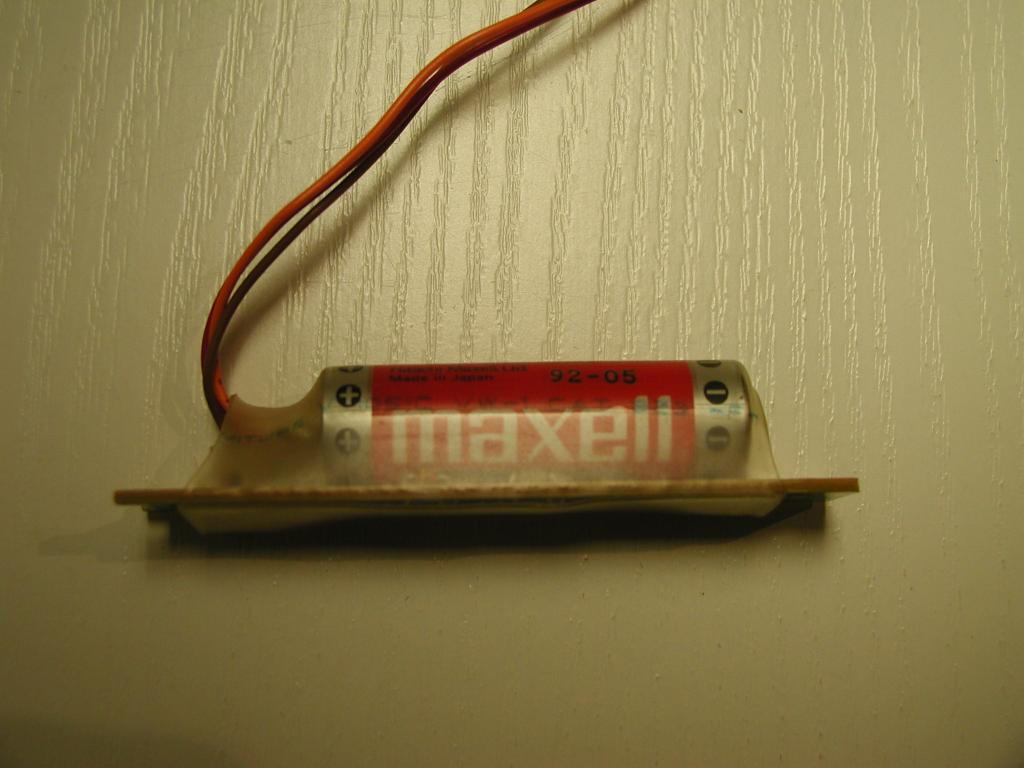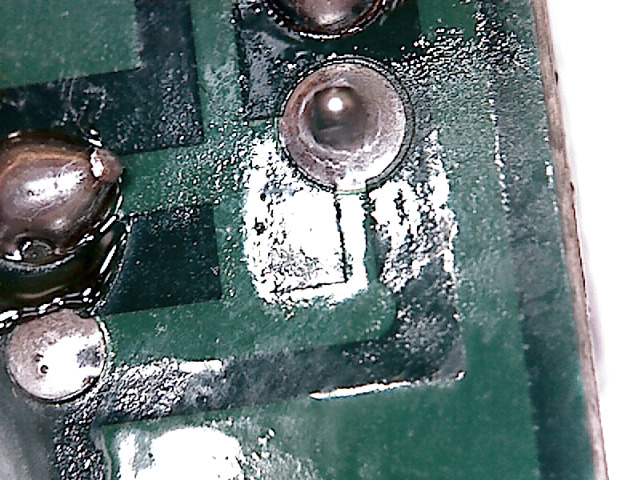Forum Replies Created
- AuthorPosts
-
There is a setup option “move”. Automatic and manual.
But this behaviour is not quite normal. Mine does not move when waking up.
Maybe the lithium Battery is going bad… BL7000 has a 6V Batterie AND a 3,3V lithium cell…
The cassette loading mechanism is ok? Not broken?
Loading/Unloding is working?
Usually the capstan motor does not turn forward/backward any more, just one direction breaking the loading unit.
Replace caps on the capstan.
If defect… and they are the first caps to fail… they cause an overload on the 12V line, causing an emergancy shut-off of the vx
If the smd chip becomes hot, you have found the problem.
Ups. Does it still have a picture…?
The vx5000 has severe problems with the caps.
This is the quite normal minimum amount of caps to be replaced in a VX5000.
Do not power up the vx without having replaced each of them. The boards will be contaminated with acid beyond repair… and there are no survivors when acid is on the boards.
I have done lots of boards in the 90.ties, removing 100% of the caps and storing them without the caps.
Even brandnew stored, 1 time powered up is enough to make the caps loosing their acid. So DO NOT POWER UP a VX without having done the job,
I have done a lot of them…
… and why dont’t you replace the battery? Or is the AC charging tool defect?
It’s a lithium battery. That’s no fun… it can burn or explode…
S45 speaker sound pretty good if technic is ok. Little bit oldfashioned, not very clear, but pretty ok.
The crossover is made with bipolar electrolyth caps. Even new, the sound is just ok, not more.
Replace them with this material: Audyn MKS foil caps. They last or a lifetime… and the sound is superior for tweeters and crossovers. Just a little bit expensive…
A dying cap in the sound path will not react within a couple of seconds… dead is dead. Only some heat can change this fact for some time.
No, this behaviour is typical for the muting relay. Clean the contacts either with contact cleaner or very fine sanding paper or a special contact file.
You can test this fault with the second unmuted pair of loudspeaker plugs. If there is no problem, it’s the relais. If the problem consists also on the unmuted path, it’s a cap problem.
You need a Beolink 7000 “RDS”…
Has it “RDS”?
Not all BL7000 can handle RDS.
“on the diodes…” or around the diodes?
“At” means dead diodes… at least one has died.
… and yes, there are around 40V around them. TR10 is the switch to fire them up…
… and a dead C19 can fire them… literally until they crack.
Have you checked the lithium cell 3V and the option programming?
The display is ok?
The ir sender use a pretty high voltage… 32V when i remember right… and the axial caps are pretty old. I found already some of them with a short, and a burnt resistor on the display.
But it can also be dirt on the red plexy glas.
The transistor is not the problem.
Replacement necessary of both? No!
But both of them must be ok. The amplifier factor must fit together. There is no use of a transistor with factor 20 fitted with another one with 100. This will not work. They must form a pair with the same amplifier factors.
Just for testing and find the fault? Just replace it… and replace it later by the real one.
Next problem: did you adjust the no-load-current? A potentiometer, adjusting the current when running in standby?
No? OK, then the next transistor will fail also.
Power amps are always problematic. Because of that, use a light bulb in the powersupply… better 2x in the positiv and negativ supply. When the light goes on, you have a problem. Or you have found the problem.
Use a 5W 12V or even 2-3 in line depending on the size of the amp … at least it will limit the smoke.
Sorry, it’s not a couple, it’s a lot of them. Around 50-80…
… and the ones around the Dolby Chip are the reason for the bad dull sound. There you need MKS Wima +/-5 tolerance… and the the sound will be great instead +50/-20% electrolyth series crap.
Selected +/- 1% MKS non magnetic in the complete sound path … and it will play audiophil.
That’s hard work for some days and it’s not easy to get the material or do the measurements…
The upgraded Beocord 7000 can play and record from a CD and no one can tell, what is now playing…tape or CD. Only a very few people can do this…
This one has just some of the modifications (~30%)… just an impression what is inside and what is to do.
The switches can have oxidation. There ist just a switch going to the 8155 port chip, nothing elase but a cap an d a resistor.
The switch itself can have a problem. You can measure it, resistor 0 or very high.
But what helps: replacement or some current around 200-500mA… the current will clean it. But only if disassembled or the cpu will die.
Second possibility: there is a connector from the front pcb to the cpu board. The connector can have the same oxidation, but can be cleaned.
Heads defect?
99%= NO
Caps defect, quite normal.
Electrolyth and tantalum caps fail after this long time, that’s quite normal.
MX6000?
On the MX stand?
Maybe the Playstation under the MX in a shelf?
Then a pair of BL6000 will do a great job.
It is important, that the hight of the picture tube meets the output of the loudspeaker.
It is disturbing, when the picture and the sound come from different locations, especially when the hight does not fit together or is to far away.
MX on a stand, BL6000 left/right to it. Lot of fun. 🙂
The MX6000 can program the internal and external speakers as something like a sound stage. The stereo signal becomes wider and the effect is, that you can locate objects by hearing the position and not only by seeing them on the screen. It’s much more realistic.
Maybe a old timer programming in memory?
Ups…
da hat jemand die Kühlluftöffnung vom Verstärker zubetoniert. Die Atmung eines Lautsprechers so zu behindern hat schwere Vor- und noch mehr Nachteile. Nur den Vorhub zu fördern und den Rückhub zu behindern per festem Filz heißt schlicht, von Bassreflex nicht viel verstanden zu haben… nur noch 50% Bassvolumen.
Und Kabel Voodoo ist echt Glaubenssache. Kann man machen, aber es geht wesentlich einfacher… Schaltplan lesen und unnötiges Zeug rauswerfen. Alleine was man serienmäßig ohne den geringsten Aufwand rauswerfen kann… und kostet nix ausser etwas Arbeit.
Das Einzige, was man empfehlen kann: Mundorf macht echt gutes Zeug… leider viel zu groß für die kleine 6000er und weil ohne passive Weiche… für diePenta geht’s bestens.
… und raus mit Elkos. Das wurde richtig erkannt, die sind allesamt fällig nach dieser Zeit.
Elna Silmic ist OK, Nichicon ist das Material was ich meistens rabenschwarz oxydiert rauslöten darf… werd’ also den Teufel tun und den neuen Belzebub wieder einlöten. Warum sich mit 2000 Stunden zufrieden geben wenn man doch 10.000h mit Panasonic FR und mehr haben kann?
Wenigstens ist das Platinenmaterial der 6000er etwas resistenter.
24 December 2022 at 06:56 in reply to: Beolab 4000 – Taugen die was? Vergleich mit Beolab 6000 etc.. #34457Oh oh…
Kabel Voodoo. Was soll’s… aber komisch, am Hybridverstärker gings glatt vorbei. Da sind die Beinchen noch viel viel dünner … das ist dann die Sicherung dafür. 🙂
Die gezeigten Elkos kann und sollte man nach 30 Jahren machen. Ok.
Aber a bisserl mehra Soundweg gibt’s da schon noch… aber der ist nach dieser Kur wenigstens nicht kaputt 8)
Naja, ich hoffe nur, dass nie einer mit sowas zur Reparatur kommt. Das fällt dann unter Totalschaden.
Mit Klebeband reingetüdelte Elkos aus der Stromversorgung. Wofür die Schaumstoffringe sind, hat da ebenfalls jemand wieder nicht geschnallt. Grausam…
Wie der Klang sich da verbessern soll…. hmmm, auch Voodoo? Geht nich’ anders…
Austausch elektronischer Komponenten wie Chips und Kondensatoren…
Serie B&O für den Opamp LM837 in den hochwertigen Bereichen: Klirrfaktor 0,0015% mit Rauschabstand 90 dB, ansonsten deutlich schlechter…
Burr-Brown OPA 2132: Klirrfaktor 0,00008 % mit Rauschabstand 130 dB
Austausch aller Elkos +50%-20% gegen +/-5% nichtmagnetische MKS Folien
Entfernen aller parasitären Schaltungsteile um genau diese “Sparschäden” wegzudämpfen…
Danach geht einiges.
Stelle nur mal ohne Quellenwahl auf maximale Lautstärke und betätige den Lautstärke Regler an der Fernbedienung. Man hört den Datenbus der Chips zirpen und quieken … Diiiidadaddadiii… deutlich zu hören.
Mit Mod zirpt dann garnix. Ruhe, das reine unverfälschte Signal.
Die Standardeinstellung bei den üblichen B&O Anlagen: Höhen rein, Bass rein… und als schlimmstes: Loudness… man will ja Bass und irgendwas verstehen.
Danach: Bass 0, Höhen 0, Loudness aus. Keinerlei Klangveränderung, kristallklare Höhen, abgrundtiefer Bass und ein richtiges Volumen … genau so, wie Aufnahme mal war.
Hör dir auf einer audiophilen Anlage mal “Hotel California” an, und dann Serie. Dann weiß man den Unterschied. Dann ist Serie tot…
- AuthorPosts






